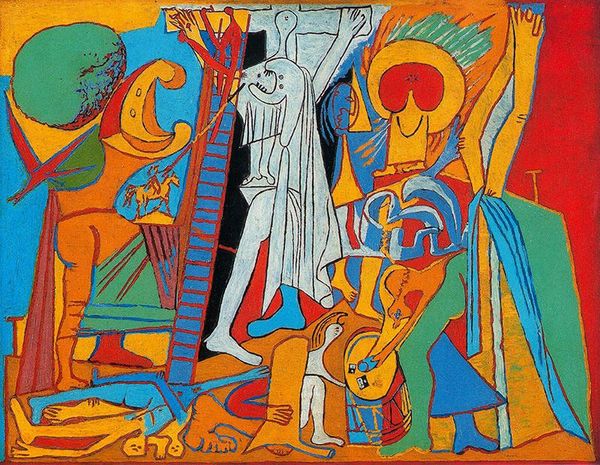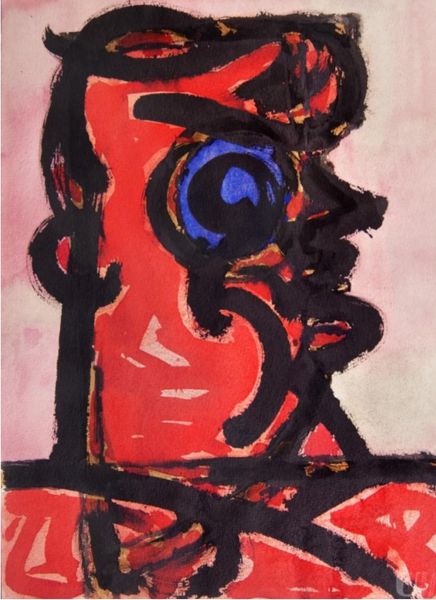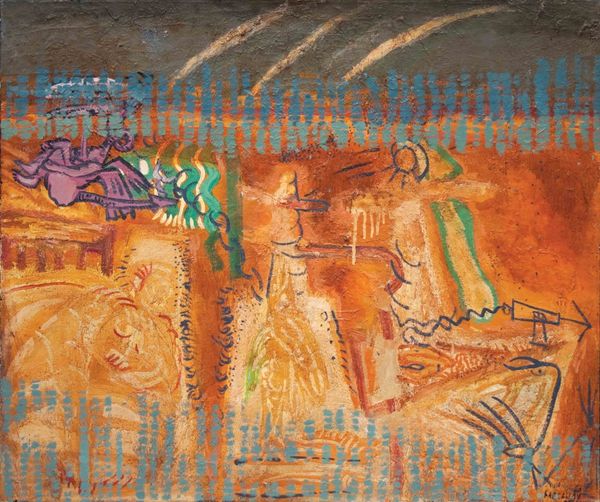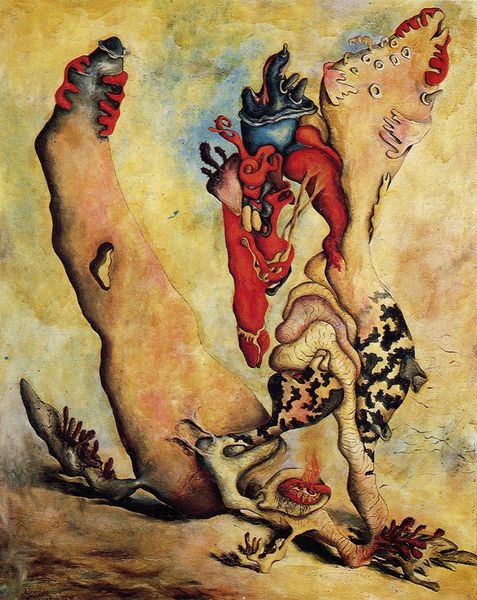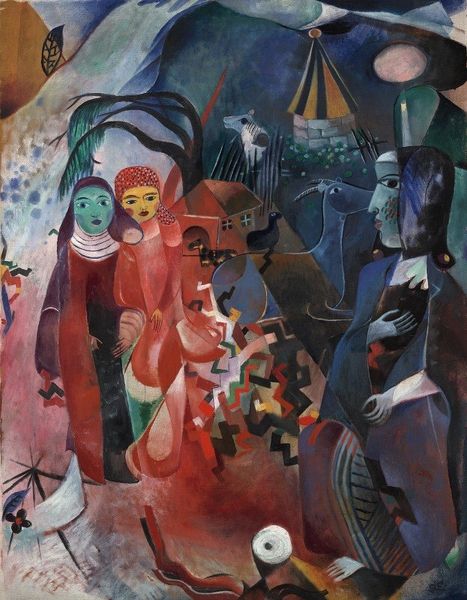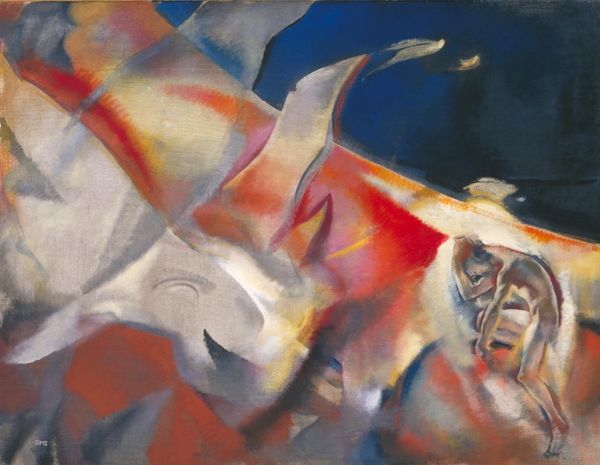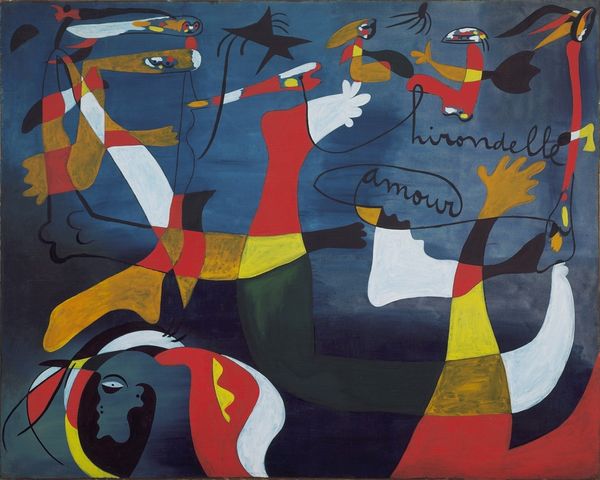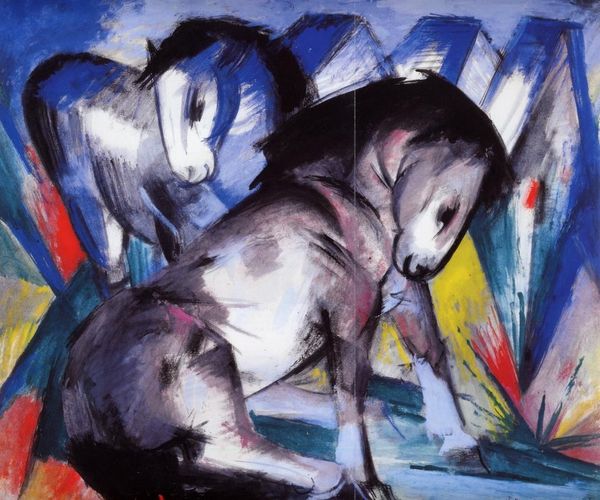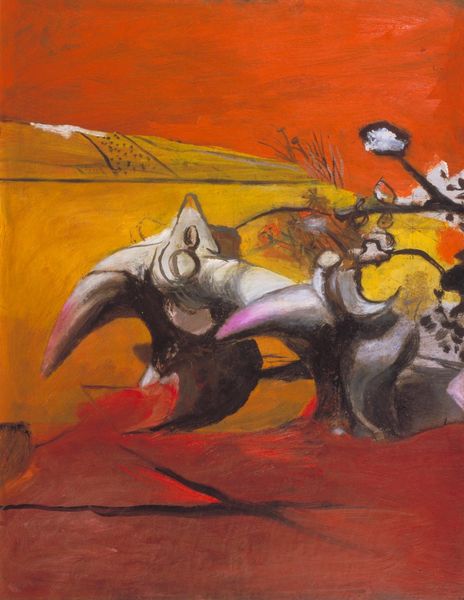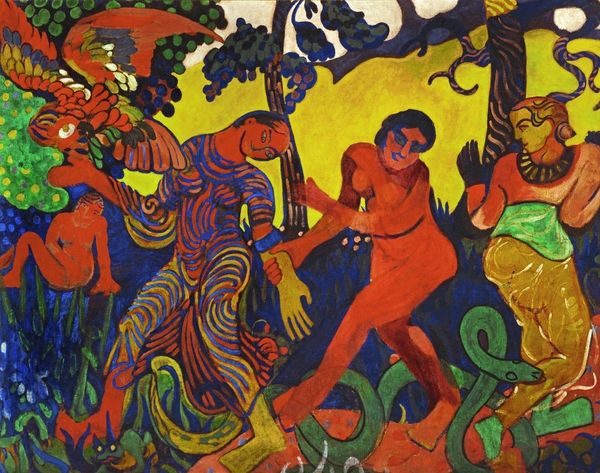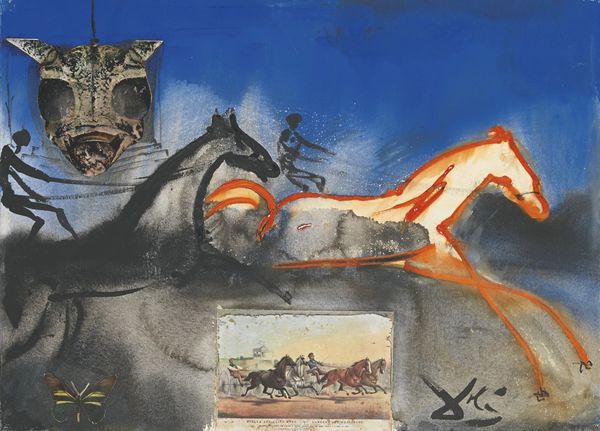
Copyright: M.F. Husain,Fair Use
Curator: The visceral feeling that surges forth—the colours vibrate against each other; they create a raw landscape with our figures posed just off center. Editor: That’s a great first read. For context, this is M.F. Husain’s “Untitled (Blue Figure and Tiger),” created in 1964 using acrylic paint. It's an example of his modernist style blending elements of Post-Impressionism and Fauvism. The composition places a blue, almost surreal figure alongside a stylized tiger against a vibrant, somewhat chaotic background. Curator: Chaotic, yes, in the best possible way. Look at that figure—so arresting, this almost electric blue. It's as if he’s found his way here from the artist’s dream world, all those gorgeous angles... he isn't merely there, is he? He just *is*, vibrantly and intensely, next to the… is that a lemon yellow tiger? Editor: Indeed. The bold colour palette is very evocative, the use of red, yellow and blues is what makes this acrylic painting sing with tension and expression, drawing from both Fauvist colour experiments and post-impressionist formal approaches, even within this context of postcolonial India. And his tiger is quite fascinating considering its traditional symbolic significance in Indian iconography, often as the mount of the Goddess Durga— a potent emblem of power, courage, and protection. Curator: See, there it is, lurking beneath the image; something older, richer and almost ferocious when set loose. And do you suppose Husain wanted to disrupt those traditions just a little, give us pause as to how these historical myths play with his new vision? That lemon colour choice is genius. The tiger becomes a vibrant spirit more than a man-eater. And yet, danger still whispers. It’s complicated! Editor: Precisely. It certainly challenges any straightforward reading and highlights Husain's own personal vocabulary. One of the things I keep coming back to, considering his background, is that by showing these paintings to a European and North American audience he could destabilize those established norms or expectations. He asks a viewer what cultural significance *they* impose on his characters. Curator: A potent question still resonant in gallery walls worldwide. What an act to reclaim an image by tearing away and then restitching. Thank you for enriching this work and lending historical weight! Editor: The pleasure was all mine. Reflecting on this piece, one recognizes Husain’s deft manipulation of the audience, compelling us to grapple with shifting identities, both personal and political, making this an iconic artwork!
Comments
No comments
Be the first to comment and join the conversation on the ultimate creative platform.
